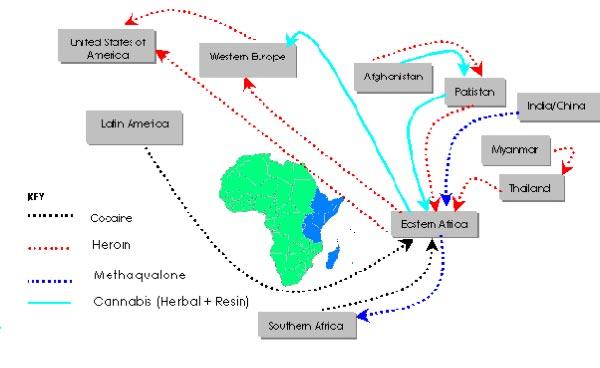When you hear the name Gary Ridgway, images of chilling crime scenes and unanswered questions inevitably come to mind. Known as the Green River Killer, Ridgway’s story is one that delves deep into the darkest corners of the human psyche. What drives a person to commit such heinous acts repeatedly, often evading capture for years? In this article, we’ll take a closer look inside the twisted mind of one of America’s most notorious serial killers, uncovering the chilling details behind his crimes and exploring the unsettling psychology that defined his dark legacy. Join me as we step into the shadows and try to understand the enigma that was Gary Ridgway.
Table of Contents
- Unraveling the Chilling Psychology Behind Gary Ridgway’s Crimes
- The Twisted Patterns That Led to the Capture of the Green River Killer
- Victim Profiles and the Haunting Impact on Communities
- What Law Enforcement Can Learn From the Green River Case to Prevent Future Killers
- Wrapping Up
Unraveling the Chilling Psychology Behind Gary Ridgway’s Crimes
Gary Ridgway’s disturbing spree forces us to peer into a psyche twisted by a blend of deep-seated psychological scars and warped compulsions. Unlike many serial offenders driven by impulsive rage, Ridgway exhibited a chilling level of calculated detachment and control over his actions. His ability to maintain a facade of normalcy, evidenced by his long-term employment and family life, starkly contrasts with the cold precision he applied when selecting and hunting his victims. Psychologists suggest this duality often stems from a profound compartmentalization mechanism — where an individual isolates their dark desires from their everyday persona to avoid cognitive dissonance.
Several factors appear to have fed into Ridgway’s deviant behavior, making his case a grim study in the extreme consequences of unresolved psychological trauma combined with a predatory mindset. Experts highlight:
- Early childhood neglect and abuse: Often cited as a catalyst in the development of antisocial tendencies.
- Sexual dysfunctions and fantasies: Fueling the obsessive need for control and domination over vulnerable victims.
- Psychopathic traits: Including lack of empathy, superficial charm, and manipulation skills that allowed him to deceive those around him.
These elements coalesced into a chilling blueprint for his crimes, showing how profoundly complex and multifaceted criminal psychology can be — especially in one of the most notorious killers in American history.
The Twisted Patterns That Led to the Capture of the Green River Killer
Gary Ridgway’s chilling modus operandi was a labyrinth of cruelty and deception, marked by a series of twisted behavioral patterns that eventually unraveled in the face of relentless investigation. His victims, mostly vulnerable women, were often lured under false pretenses, a grim testament to Ridgway’s manipulative prowess. The repetitive nature of his crimes revealed a psychological compulsion that guided his dark journey through the Pacific Northwest over two decades. What made his capture so astonishing was how these patterns, once dismissed as erratic, formed a sinister blueprint of methodical evasion and chilling control.
Key elements that led to breaking the case included:
- Recognition of the geographical consistency where victims were found, often near highways or isolated locations.
- The use of forensic breakthroughs, such as DNA evidence linking Ridgway to multiple crime scenes across Washington state.
- Survivor testimonies that pieced together Ridgway’s approach and tactics, shedding light on the psychological manipulation at play.
- Investigators mapping interview patterns that revealed repeated lies and alibis, drawing a clearer picture of his double life.
This web of cruel repetition and careful avoidance of detection ultimately became the fabric that snared a man who once seemed untouchable. The twisted patterns of Ridgway’s actions didn’t just expose a brutal killer—they cracked the code of a mastermind hiding in plain sight.
Victim Profiles and the Haunting Impact on Communities
The victims of Gary Ridgway, often referred to as the Green River Killer, were predominantly vulnerable women, many of whom struggled with addiction, homelessness, or unstable living conditions. Their profiles reveal a tragic picture of society’s most marginalized—individuals whose disappearances might initially have gone unnoticed or uninvestigated. Ridgway’s ability to exploit these vulnerabilities not only highlights a chilling predatory instinct but also exposes the deep fractures in community safety nets. These women were not just statistics; each had a story, a struggle, and a network of loved ones shattered by incomprehensible loss. This haunting vulnerability fueled a relentless pursuit of justice for decades, shedding light on the need for greater societal protection and compassion for those often overlooked.
The ripple effects of Ridgway’s crimes extended far beyond individual grief. Entire communities along the Green River corridor were gripped by a pervasive fear, as residents grappled with the reality that a monstrous predator walked among them, often undetected. Public spaces transformed into zones of suspicion, altering everyday behaviors and interactions. Neighborhood watch groups grew, and local law enforcement faced mounting pressure to intensify efforts—symbolizing a desperate collective desire for safety and closure. Families, friends, and even strangers were united in a shared trauma, which reshaped community dynamics and inspired ongoing conversations about victim advocacy and systemic change.
- Increased awareness of vulnerable populations vulnerable to exploitation
- Stronger community-led initiatives for neighborhood safety and support
- Heightened collaboration between citizens and law enforcement agencies
- Legacy of advocacy for better victim identification and forensic methods
What Law Enforcement Can Learn From the Green River Case to Prevent Future Killers
When dissecting the Green River case, law enforcement agencies are reminded of the critical importance of proactive investigative strategies. Decades ago, a fragmented approach to missing persons and victim reports allowed Gary Ridgway’s crimes to continue unchecked for years. Modern policing can no longer afford such gaps. Instead, integrating data across jurisdictions and fostering consistent communication channels are paramount. This includes the use of advanced criminal databases and forensic technology, ensuring that patterns are detected and acted upon swiftly before more lives are lost.
Moreover, the psychological profiling techniques used during the Green River investigation hold valuable lessons for officers today. Understanding the mindset of serial offenders like Ridgway involves:
- Recognizing behavioral red flags early on
- Investing in specialized training to interpret subtle cues in suspect behavior
- Collaborating closely with psychologists and profilers to construct accurate offender profiles
By embracing these approaches, law enforcement can shift from reactive to predictive modes of operation, potentially stopping killers before their spree expands, and offering a new blueprint for justice in the making.
Wrapping Up
As we peel back the layers of Gary Ridgway’s twisted psyche, it becomes clear how deep and disturbing the darkness can run within one individual. The Green River Killer’s chilling story is a stark reminder of the complexities lurking behind seemingly ordinary facades. While justice has partly been served, the lingering questions about what truly shaped Ridgway’s mind continue to fascinate and haunt us. Exploring these shadows not only satisfies our curiosity but also pushes us to better understand—and hopefully prevent—the making of monsters. Until next time, stay curious and keep digging beneath the surface.












